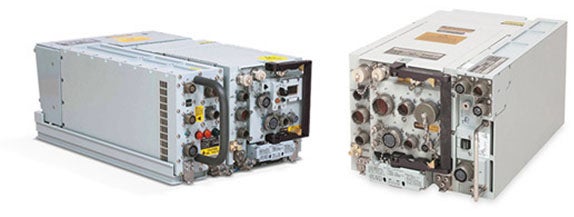A prime example is the U.S. Indo-Pacific Command’s area of responsibility, the largest of six geographic combatant commands, covering approximately 51% of the Earth’s surface. The area encompasses more than 36 countries and territories, including China, Japan, South Korea and Australia, and poses numerous challenges for military operations.
Operating in this region requires communicating over extended ranges, interoperability with joint and coalition partners and maintaining Command and Control (C2) in contested Radio Frequency (RF) environments.
As a result of these challenges, the concept “Contested Logistics” has become a key focal point in the U.S. Army’s modernization efforts, as reflected in the recent establishment of the Logistics Cross Functional Team under Army Futures Command.
Resilient communications are an indispensable element and enabler of Contested Logistics. With resilient communications, the Army can synchronize its operations and provide reliable logistical support to the entire Joint Force in heavily contested environments.
It is critical for the U.S. military and its allies to maintain effective and uninterrupted communication across vast geographic distances against increasingly technologically sophisticated adversaries.
Strengthening Signals and Protecting Network Users
In a contested environment, adversaries will seek to disrupt communications by locating and jamming signals. Therefore, the U.S. Army requires robust, secure, covert communications and anti-jamming capabilities to ensure its communication networks deliver the data for unified operations.
To counteract jamming and maintain secure communication links, Army forces can employ advanced frequency hopping, spectrum spreading and digital signal-processing techniques. These measures make it difficult for enemies to target and disrupt communications effectively.
Additionally, dispersed mobile Army units must integrate covert communication methods to maintain operational surprise and reduce their RF signature across the electromagnetic spectrum. These techniques reduce the risk of adversaries locating or intercepting transmissions and increase the survivability of friendly forces.
The Army can minimize its electronic signature through low probability of detection communications, advanced encryption, and complex modulation schemes - making it more challenging for adversaries to locate and target communication systems.
Further, protected Satellite Communications (SATCOM) provide the Army secure, resilient communication channels resistant to interference, jamming and interception. These systems ensure mission-critical data is transmitted quickly and securely, even in the face of sophisticated electronic warfare threats.
By employing advanced encryption methods, spread spectrum technology and anti-jamming capabilities, protected SATCOM systems are designed to withstand the most challenging communication environments, ensuring that geographically separated Army units do not become isolated from the Joint Force.
Bringing Domains and Allies Together
The integration of space and terrestrial networks is vital for maintaining reliable communication in contested environments. This convergence enables seamless data transfer between satellite and ground-based systems, ensuring continuous information dissemination at all times.
In addition, leveraging satellite technology extends communication range and improves redundancy, further enhancing the resiliency of the Army's communication infrastructure.
Likewise, coalition forces must now communicate effectively and share critical information. Interoperable communication systems ensure that allied and partnered forces can work together in a coordinated manner, enhancing the overall effectiveness and cohesion of military operations.
By adopting common communication standards, protocols and data formats, the Army can make decisions and execute joint operations rapidly by sharing information more efficiently with partner nations.
Fulfilling the JADC2 Mission
Joint service interoperability is essential for the success of the Contested Logistics concept.
The Army must communicate effectively with other military branches, including the U.S. Navy, U.S. Air Force and U.S. Marine Corps, to maximize their collective capabilities and execute Joint All-Domain Command-and-Control (JADC2) successfully.
Establishing common communication systems and procedures across all branches ensures a unified approach to military operations, allowing for more effective force deployment and better coordination.
The Value of Link 16 and Free Space Optics

Link 16 is a tactical data link used by U.S. and NATO forces for secure, real-time information sharing. It enables the rapid exchange of data among ground, air and naval assets, facilitating enhanced situational awareness and efficient decision making.
Link 16 supports a wide range of communication capabilities, including voice, text and imagery, allowing for a comprehensive view of the battlefield and more effective coordination between military units. As the international coalition builds across the U.S. Indo-Pacific Command area of responsibility, the ubiquitous presence of Link 16 increases in value.
Free Space Optics (FSO), meanwhile, is a line-of-sight communication technology leveraging lasers to transmit data through the atmosphere. FSO offers high-bandwidth, low-delay communication with minimal risk of interception, making it an attractive option for maintaining secure communication links in contested environments.
FSO systems are particularly effective in situations where traditional RF communication is vulnerable to jamming or interference. Additionally, FSO communication is inherently difficult to detect, as it does not produce an RF signature that adversaries can exploit.
However, FSO communication can be affected by atmospheric conditions, such as fog and rain. Adaptive optics and beam-steering technologies overcome these challenges and enhance the reliability of FSO systems.
Delivering Effective Ship-to-Shore Communications
Effective ship-to-shore communications is crucial for amphibious operations. Advanced communication technologies, including high-frequency radios, satellite links and FSO, enable seamless data transfer between naval vessels and land-based forces, ensuring that dispersed units remain connected and informed.
Integrating these communication technologies allow for better synchronization between naval and ground assets.
As modern amphibious operations often involve joint and coalition forces, resilient communication links across a wide range of platforms is essential. Future investments by the Army and its partner services should seek improvement in ship-to-shore communication systems, with a focus on enhancing data throughput, reducing latency and increasing resistance to jamming and interference.
Conclusion
Resilient communications are fundamental to the success of the Army's “Contested Logistics” concept. In the INDOPACOM theater, it is critical to ensure joint and coalition forces can establish and sustain cohesive operations and achieve mission success across a vast area.
By employing a range of advanced technologies and strategies – such as anti-jamming capabilities, covert waveforms, converged space and terrestrial networks and coalition interoperability – the U.S. military can maintain secure, uninterrupted communication channels for dispersed units to work together effectively across vast geographic distances.
As potential adversaries continue to develop their own communication-disruption capabilities, the importance of resilient communications will only continue to grow. Implementing cutting-edge communication technologies, such as Link 16, free space optics and advanced ship-to-shore systems, ensures that the Army remains agile and adaptable in the face of evolving threats.
By prioritizing the development and integration of these communication systems, the Army can continue to excel in contested environments, maintain a decisive edge over potential adversaries and achieve success in future missions.




